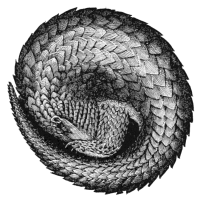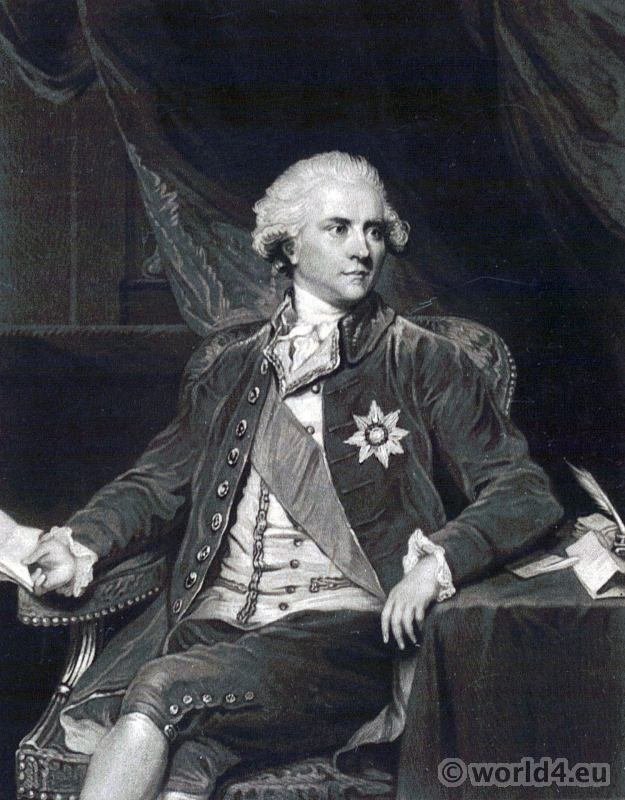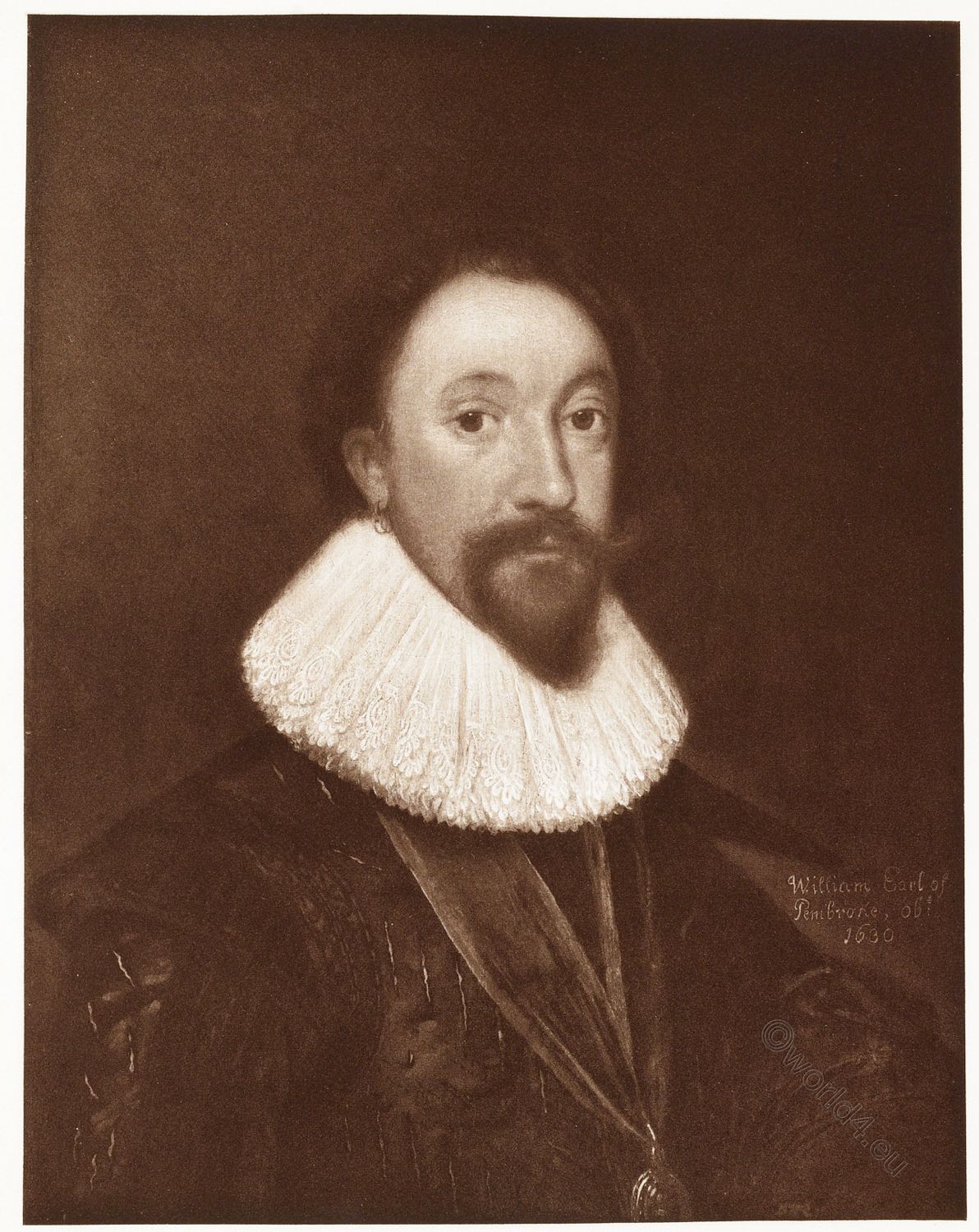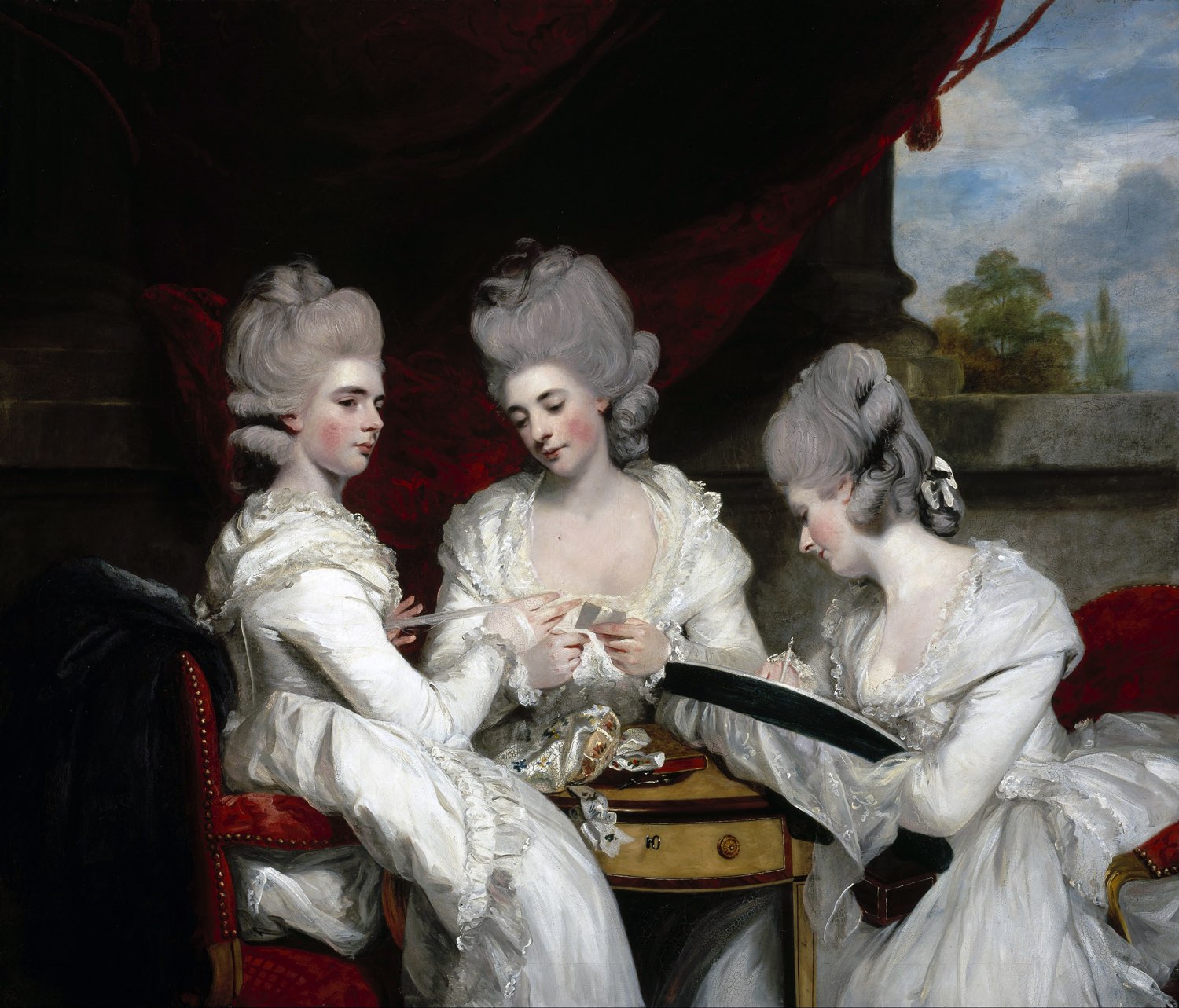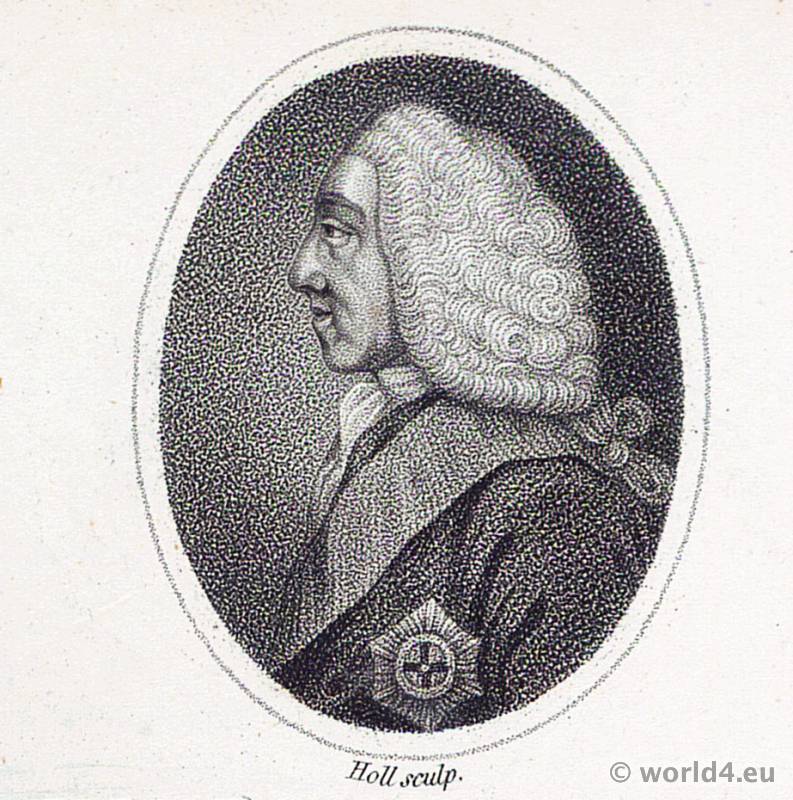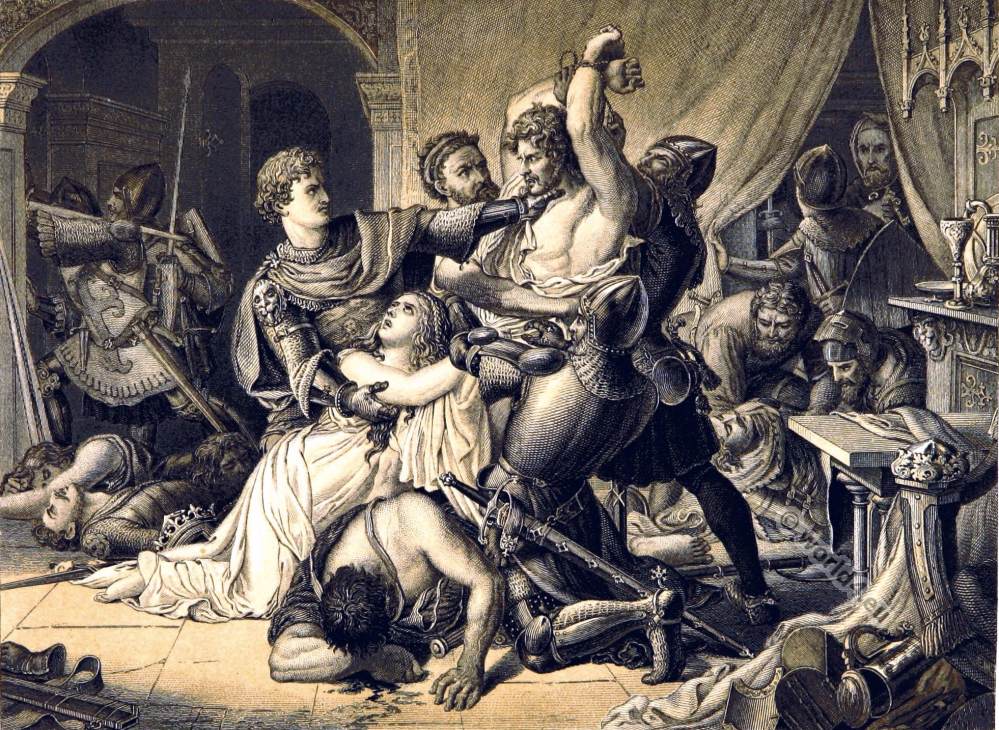COSTUME OF THE FIFTEENTH CENTURY.
RALPH NEVILLE, FIRST EARL OF WESTMORLAND; LORD OF RABY CASTLE, BRANSPETH, WARKWORTH, &c. K.G. AND HIS SECOND WIFE, JOAN BEAUFORT, DAUGHTER OF JOHN OF GAUNT, DUKE OF LANCASTER. ANNO 1425-6.
Ralph Neville (c. 1364 – 21 October 1425), descended from Gospatrick, Earl of Northumberland (Great-grandson of the Saxon king Ethelred the Redeless), was the first of that name, who attained the rank of an Earl.
In the ninth of Richard II. he was Governor of the West Marches, towards Scotland, and soon after Warden of the King’s Forests beyond Trent for life. Twenty-first of Richard, being one of the privy council, he was created Earl of Westmorland and Constable of the Tower of London. But he deserted Richard, and joined Henry, Duke of Lancaster, at Ravenspur, and was by him constituted Earl Marshal, with the gift of the county of Richmond for life.
Second of Henry IV., again Governor of Carlisle, and Warden of the West Marches. Third of Henry, Governor of Roxburgh Castle in Scotland, for ten years. Fifth of Henry IV., he defeated the Earl of Northumberland, and drove his forces beyond Durham: and the same year took Scroop, Archbishop of York, prisoner by stratagem, and in the sixth of Henry he was a commissioner upon a treaty of peace between England and Scotland. He was installed a Knight of the Garter, in the room of Scroop, Earl of Wiltshire,(beheaded in 1399) and died in 1425-6.
The Earl of Westmorland is introduced in Shakspeare’s historical plays of Henry IV. He was twice married: first to Margaret, daughter of Hugh, Earl of Stafford, by whom he had issue two sons and seven daughters.
His second wife was Joan, daughter of John of Gaunt, Duke of Lancaster, and he had issue by her eight sons and five daughters. From this stock a numerous offspring flourished under the titles of Westmorland, Warwick, Salisbury, Falconbridge, Abergavenny, &c. for the space of a century with great splendour and renown: but the civil wars cut off most of these branches, so that at this day, the Earls of Abergavenny are the only remaining male descendants, and in the female line, we believe there is only that of Braybroke.
The figure of the Earl exhibits a fine specimen of the armour, as it was worn by the great, from the middle of the reign of Edward III. to the end of Henry IV. *)
His vambraces, gauntlets, cuisses, knee-pieces and greaves are edged with rich seams of fretwork. A superb military girdle, studded with pearls, &c. encircles his hips, and over that is a belt from which his sword is suspended.
His scull-cap, of a pointed form, is elegantly wrought round the borders, with the Gothic letters I.H.S. embossed on the front. Round the cap is a wreath or torso, embroidered with leaves.
He wears a huge pair of whiskers, his gorget is of mail, and round the neck he has a collar of SS. In his right hand he holds a battle-axe of state, and behind him, on a cushion, is the tilting helmet, surmounted with his crest.
On his left hand is Joan Beaufort, his second wife, habited in a splendid mantle and coronet and collar of SS. The back-ground is ideal, and the battle-axe has been added for the sake of attitude.
*) The effigy itself affords a proof, that this kind of armour was worn after that period; there are some later even to the end of the wars of the Roses, but in the last instances, I am inclined to think, that this elegant costume had, in some measure, become monumental.
AUTHORITIES
Both the figures and the helmet from a drawing taken from the monumental effigies in alabaster, and formerly painted and gilt, in Staindrop Church, in the county of Durham. The battle-axe from a painting on glass formerly in a window of St. Mary’s Hall, Coventry. (See the figure of the Earl of Stafford, etched by Hollar, in Dugdale’s Warwickshire.)
Arms. Gules a saltier argent, for Neville. Crest, out of a ducal coronet, a bull’s head pied proper.
Source: Selections of the ancient costume of Great Britain and Ireland from the seventh to the sixteenth century, by Charles Hamilton Smith. London: Colnaghi, 1814.
Discover more from World4 Costume Culture History
Subscribe to get the latest posts sent to your email.


